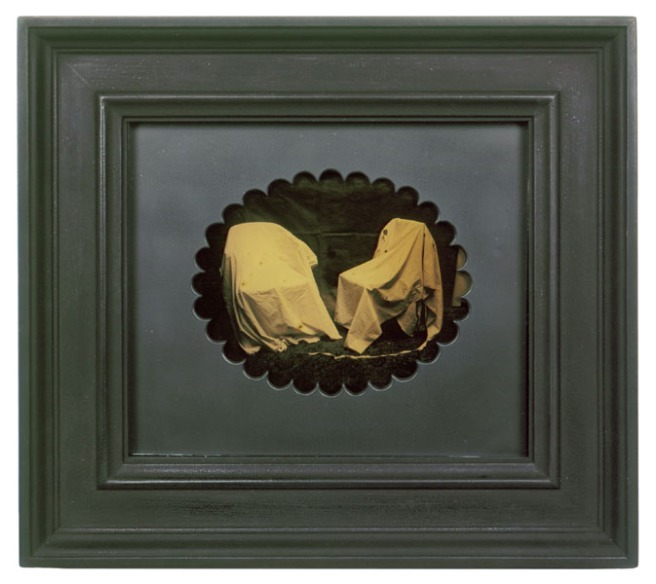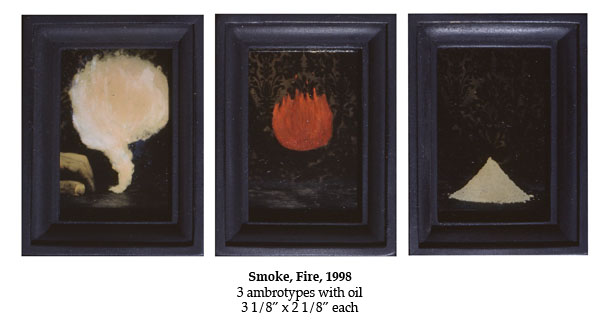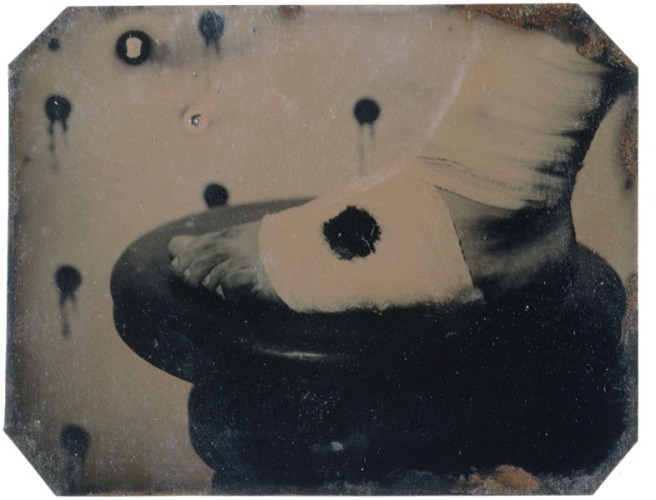“Only you know what you don’t know,” is a saying of Catherine’s that I’ve heard a number of times in the few months I’ve been working at CEG. I normally wouldn’t advertise these things that I don’t know, but I figured—for the sake of the blog—I would share some of what I’ve been learning at the gallery. Hopefully I can enlighten some of our readers and we can all get a better grasp of the things that we don’t know.
This morning, while waiting for the Grand bus, I got a text from a friend who is currently in Rochester, NY talking a workshop on the collodion process at the Scully & Osterman Studio. He had just finished making some ambrotypes and he mentioned a photo process that I hadn’t heard of before: a ferrotype. I got to the gallery, got out the Merriam-Webster, and discovered that there are two definitions. The first basically states that a ferrotype is another word for a tintype, a collodion process through which a positive image is made on a thin sheet of steel or iron (not tin) that has been blackened. I assume this is what my friend was talking about since it’s what he’s up there to learn, but I found the second definition equally interesting. A ferrotype is also a process through which you can make a photo print glossy by laying it—while wet—facedown on a ferrotyping plate (a polished metal plate), then squeegeeing the print, and allowing to dry. When you peel it away it will retain a glossy finish. There are so many photo processes that I’ve learned over the years, but I never would have learned about the use of a ferrotyping plate if I had assumed that a ferrotype was just another collodion process (i.e. tintype).
If anyone has made glossy prints by ferrotyping then I would love to hear about it. I imagine that it is a technique seldom done any more, even by those who practice old photographic processes. I’ll leave you with a few images by Dan Estabrook, two of which are ambrotypes and the last one is a tintype.




Isn’t it true that a ferrotype requires an underexposed negative? Interesting process!